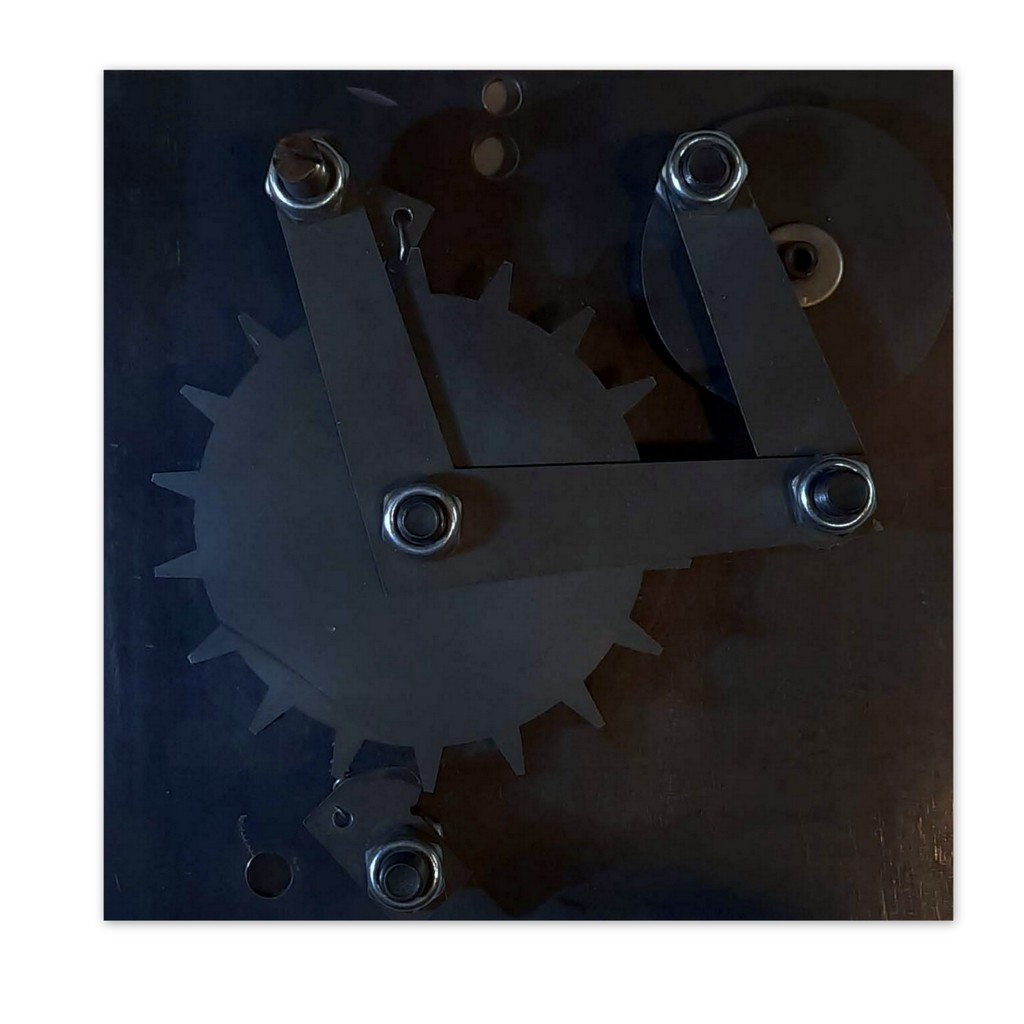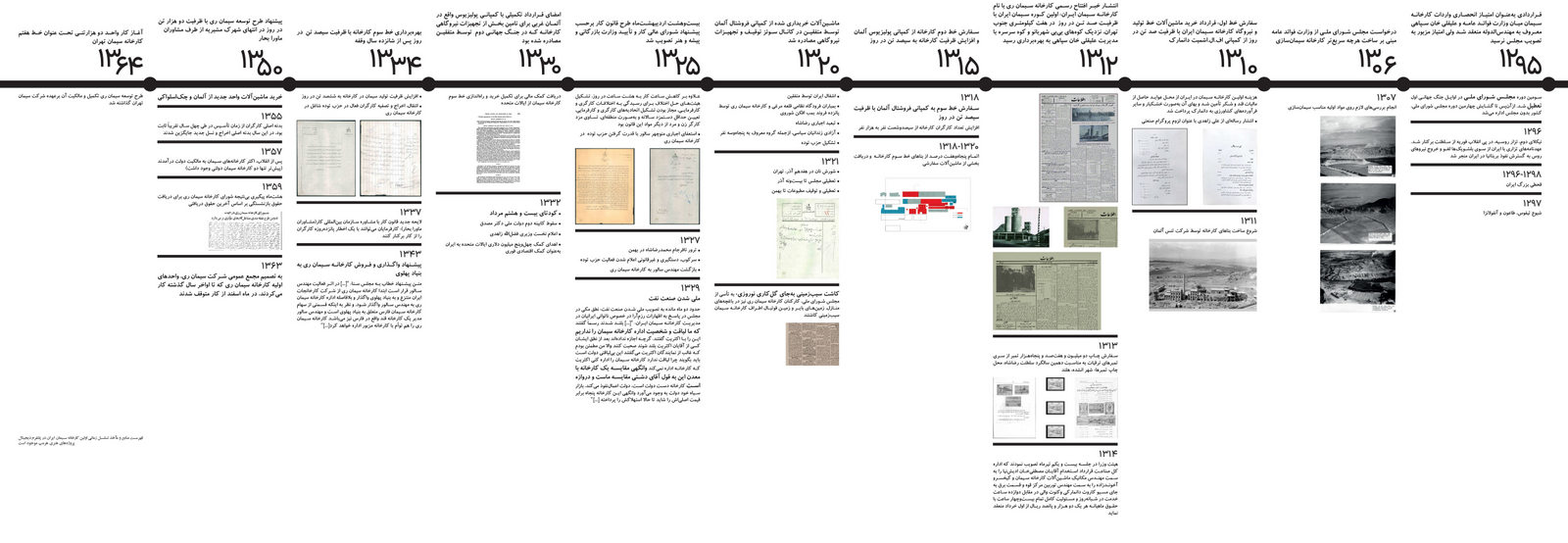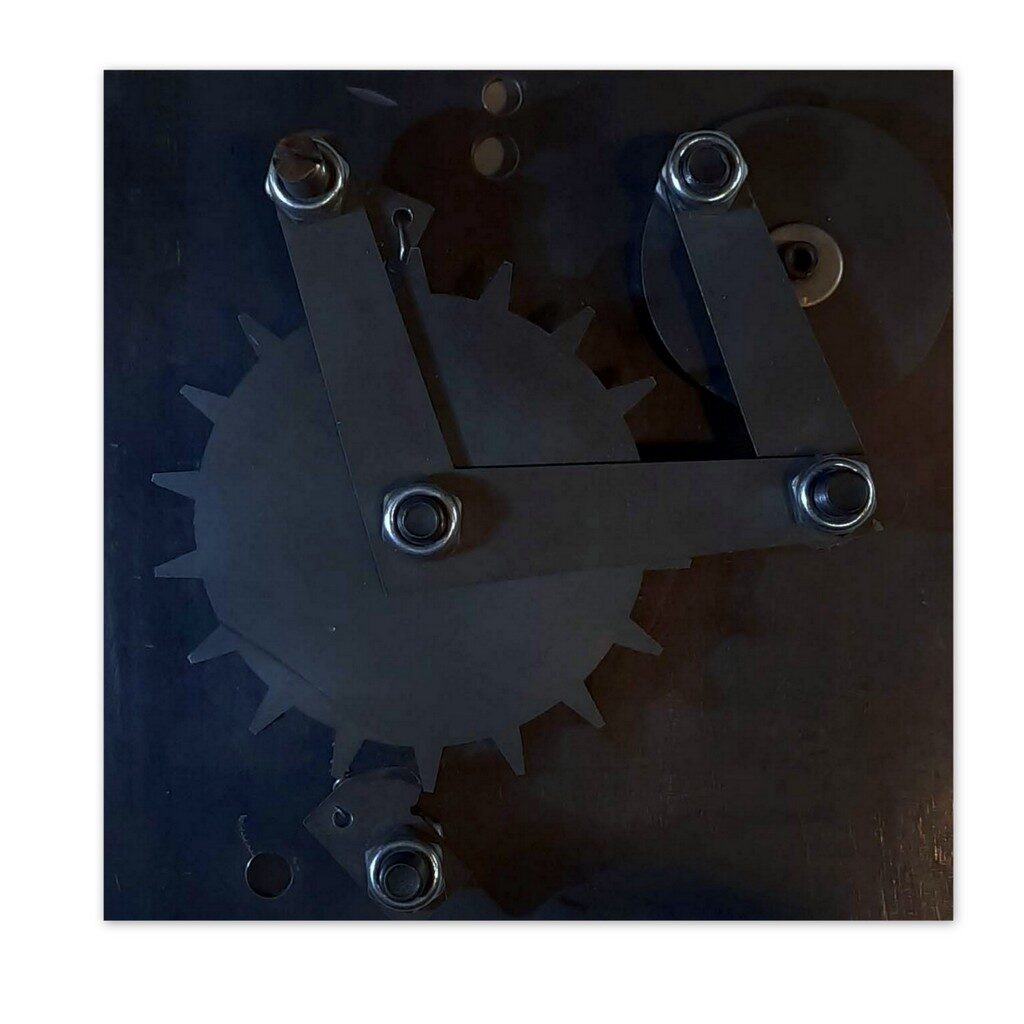projects
collaborative project history of art photo-based project Text-Image installation Text-Object Installation video
-
Timeline: Rayy Cement Plant
Cement and ore processing plants are crucial in modernization, urban development, and the exploitation of natural and mineral resources. These industrial units’ construction, installment, and maintenance are subject to a mega network of construction companies, agencies, and monopolies, often as strong and durable as cement. As a result, their impact extends beyond urban construction and infrastructure development. For example, the track of their presence can be seen from government aid policies to achieve self-sufficiency to the forced migration of the locals due to climate change.
The time course depicted on the wall of the “Immediate and Remote” exhibition and the report/research on “Iran’s First cement Plant” published on the HerMaP Art Projects website is a glance at the 70-year timeline of an industrial heritage left by construction and engineering companies in Iran.
In this time sequence, the Rayy Cement Plant functions like a prism whose function is to divert the focus rather than a telescopic approach to history: a prism to disperse the disjointed links of international trade, geographical conditions, and historical considerations within a given territory. -
Contradictory Evidence
– A series of photos are gathered here.
– These photos are bound as a collection. The above collection may have come out by accident; It means that the objects are not necessarily of a single collection (not belonging to a single individual/family). It is likely that, unlike the present photographs, the depicted objects were always far apart. However, you can imagine these objects are all items of the same household.
One can check the arrangement of the photographs. This arrangement may express a theme or a message. For example, it might refer to different preoccupations of someone at various stages of life.
The collection can be subjected to validation if you have access to the required shreds of evidence. After proper investigation, you might come up with this question: To express a given theme and to be faithful to reality, or even regarding the expressive or aesthetic aspects, wasn’t a specific object’s photo -the photo of wish is absent in the collection -of more priority? This way of reading depends on whether we have reached a convincing judgment about the collection’s intended theme.
– In the world of art (how can you be sure that the photos are collected to be presented as works of art?), it is generally emphasized that loyalty to the external reality is not important and valuable. The presence of 46 photographs together is enough to read them as a symbolic collection (apart from the above objects belonging to a household or not).
– Reading the collection as cultural and social symbols is also possible. The photos represent manners, personal/collective history, characteristic attributes, and socio/cultural conditions of their time. Suppose we adhere to this method of interpretation. In that case, the collection can be considered a deliberate fabrication or manipulation, with an ironic approach to commercializing history through retro.
– Reading these photos as hieroglyphic signs is worthwhile too. It means imagining a visual writing system. For this reading, it is necessary to ignore cultural and ideological references. Then what remains that can be meaningful? You should pay attention to syntactic relationships. It means the connection of each photo with other photos. And in that case, how can meaningful sentences be made from juxtaposing images?
-
Movement & Disruption
For my master’s thesis, I focused on one hundred critical texts (essays/articles/reviews) about contemporary Iranian photography from 1990 to 2019. After my two-year research on Iranian contemporary photography, I realized that these 100 texts could constitute the discourse of the critical literature relevant to photography that has emerged over recent decades n Iran. You can see some excerpts of them on the gallery wall. By doing so, I intended to find the potential capacity to extract a hidden intertextual conversation among them.
In the present installation titled “disruption and continuity,” I highlighted two recurrent failures that can be recognized in the critical view of Iranian photography. According to the writers of these texts, these two shortcomings have prevented the formation of the continuous flow of art that we know in the chronological lists of periods in Western art history, so they have taken away the possibility of producing a coherent and modern art history out of the contemporary art projects by Iranian artists. These two are 1) the lack of historical observation and contextualization from the art historians and critics and 2) the need for authentic representation of the lived experience in Iran’s cultural/social circumstances from the artists’ part.
The cogwheel embedded between the texts on the wall converts “flow” into “split units.” A mechanism that temporarily interrupts the continuous flow of motion with timely intervention (As in the clock, the flow of time is limited to a comprehensible quantity.) The cogwheel machine is a sign, a hieroglyphic semantic unit that will respond to the basic issues of contemporary Iranian art criticism. -
Enghelab St. Local Bookstores
For my master’s thesis, I focused on one hundred critical texts (essays/articles/reviews) about contemporary Iranian photography from 1990 to 2019. After my two-year research on Iranian contemporary photography, I realized that these 100 texts could constitute the discourse of the critical literature relevant to photography that has emerged over recent decades n Iran. You can see some excerpts of them on the gallery wall. By doing so, I intended to find the potential capacity to extract a hidden intertextual conversation among them.
In the present installation titled “disruption and continuity,” I highlighted two recurrent failures that can be recognized in the critical view of Iranian photography. According to the writers of these texts, these two shortcomings have prevented the formation of the continuous flow of art that we know in the chronological lists of periods in Western art history, so they have taken away the possibility of producing a coherent and modern art history out of the contemporary art projects by Iranian artists. These two are 1) the lack of historical observation and contextualization from the art historians and critics and 2) the need for authentic representation of the lived experience in Iran’s cultural/social circumstances from the artists’ part.
The cogwheel embedded between the texts on the wall converts “flow” into “split units.” A mechanism that temporarily interrupts the continuous flow of motion with timely intervention (As in the clock, the flow of time is limited to a comprehensible quantity.) The cogwheel machine is a sign, a hieroglyphic semantic unit that will respond to the basic issues of contemporary Iranian art criticism.



